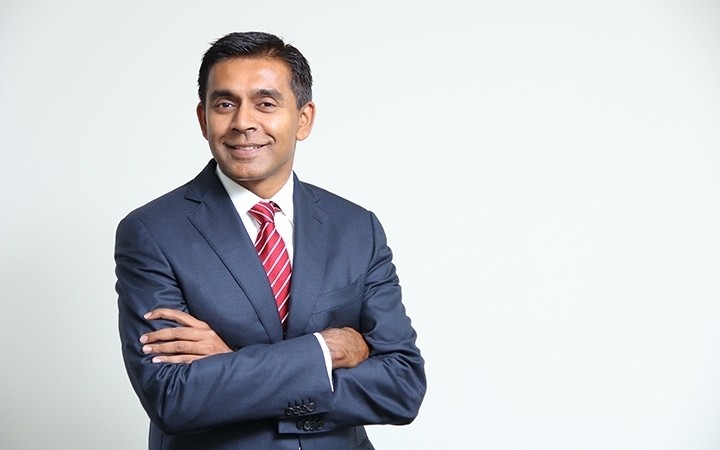
Brahmal Vasudevan’s initial Creador fund, totaling US$130 million, is almost spent.
Having already taken stakes in an Indian financial services firm, a regional restaurant chain and Indonesian pay-TV operator MNC Sky Vision (MNCSV), Creador inked two more deals in the first half of 2013.
Creador has concluded another two deals yet to be announced, with another expected to complete before year-end.
“It has been a busy year,” says Vasudevan in an interview with Media Business Asia.
Creador prioritizes a concentrated portfolio and a larger check size per investment, though the next fund should be bigger, targeting between 10-12 deals.
“When we find a high conviction investment, we want to be able to put the maximum dollars in,” Vasudevan notes.
Headquartered in Malaysia, where Vasudevan grew up, Creador aims to capture macroeconomic shifts in Malaysia, Indonesia and India, but its preference is for Indonesia and Malaysia.
A uniform approach applies to all three markets, broadly targeting 25% IRR or three times the investment in five years.
We spoke to the veteran investor about past experiences and future prospects for the media sector in Asia.
How would you rate your investment in MNC Sky Vision?
Brahmal Vasudevan: This is a good example of a sector we know extremely well. Having worked in satellite TV in the late 1990s, invested in the largest cable TV company in India and tracked the global industry for the last two decades, we have a good understanding of what it takes to be successful and how the company should think about itself.
We got to know Media Nusantara Citra [MNC] three years before the investment, so we could track their progress. We also met all of the competitors to get a feel for the market potential, and the competitive strengths and weaknesses of each player. In the end, we felt MNC’s pay-TV business, MNC Sky Vision, has a far superior proposition and we made a fairly concentrated bet.
We believe MNC Sky Vision will continue to improve its market share and competitive position, so the long-term profits look good. While the business has grown about 35% in the last year, the valuation has grown 65-70%. Although the valuation multiple has increased, it is not out of touch with comparables in India when you consider its market penetration and growth prospects.
We attribute the strong performance of the company in the financial markets to a combination of (a) growth, which has been a large part of value creation, and (b) multiple expansion, which has taken it closer to the comparables.

In addition to participating as a cornerstone investor in the IPO, we did an add-on investment at a higher price to increase our position. At the outset we made a US$28 million investment along with co-investors, and the second round was US$31 million, again with co-investors.
Are Indonesia media companies overvalued? Do they still have value as a consumer proxy?
BV: Unlike other markets, where there are more ways to play the space, aside from MNC, which has a free-to-air and satellite business, there are only two other investable platforms. Given that we have already aligned ourselves with the largest group, it would be difficult for us to make another media investment.
That said, valuations in media are very reasonable, considering the growth rates in the industry. Some of the free-to-air businesses have low-20s P/E multiples, and with the free cash flow nature of the business, I would not worry too much about overvaluation.
Creador has made two financial investments in India, but none in Indian media. What would it take for you to enter this sector?
BV: In a past life at ChrysCapital, I was an investor in the cable industry in India. Unfortunately, the results were not that encouraging; we made a very nominal return. Really, when considering India media, we have to view each sector separately.
Within television, the content companies have certainly created a lot of value in the last 10 years, and with digitalization, I think they are going to be the big winners. Unfortunately, there have been very few ways for private equity to play this. The most notable being the two public companies, Sun Group and Zee Group, but this probably lends itself more to public investors.
The other area has been distribution, either cable or satellite. We were a little hopeful about DTH, but they seem to have stumbled recently as digitalization has meant people have found less reason to switch to DTH. In the cable universe, it has not been an easy story, and the jury is still out whether digitization is going to result in better revenue capture for the larger MSOs.
It is anybody’s guess how long it will take for the effects of digitalization to be clear. Conceptually, it makes sense but whether the local cable operators will share more of the revenue is unclear.
We are waiting on the sidelines, observing what is happening, but at this point we do not necessarily see anything compelling.

As a leading independent consulting and research provider focused on Asia media & telecoms, MPA offers a range of customized services to help drive business development, strategy & planning, M&A, new products & services and research. Based in Hong Kong, Singapore and India, MPA teams offer in-depth research reports across key industry sectors, customized consulting services, industry events to spread knowledge and unlock partnerships, and publications that provide insights into media & telecoms.
All Media Partners Asia articles >Thank you for submission
Once you activate the account, your subscription entitles to receive 3 months of complimentary access to ‘The Digest’, MPA’s monthly email analysis,updates across TMT with exclusive industry interviews and data.